Search Results for 'Galway Gaol'
24 results found.
Salthill village, 1920
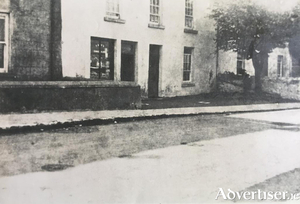
It is hard to believe that this is what the centre of Salthill village looked like exactly 100 years ago. The house on the left belonged to a Mr Kelleher who was a member of the RIC. It later became a guest house called the Rockville which eventually expanded into a small hotel and, like many such premises in Salthill, it was fully licensed. It had high standards, the porter always wore a white coat and the waitresses wore proper uniforms. The distinguished writer Donal Mac Amhlaigh worked here for a while during the fifties.
Hidden lives on a Galway tree

In April 1902 Augusta Lady Gregory was working hard at her home at Coole, translating from Irish the myths and legends of Ireland. Somebody had dubbed Coole ‘the workshop of Ireland’, and the phrase went straight to her heart. Her pride in it glows in her letters to Wilfrid Scawen Blunt, her one-time lover and life-long friend, and admirer.*
When the hangman came to Galway
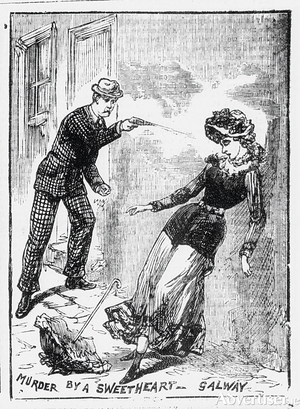
In 1883, Thomas Parry, a 26-year-old assistant shepherd, was working for Major Thomas Braddell in Wexford. Also working there was Alice Burns, a 19-year-old Galway girl. The two had a whirlwind romance, Parry was deeply in love and bought her a beautiful ring and they became engaged.
Grief and despair on Galway streets November 1920
Sunday November 21 1920, known as ‘Bloody Sunday’, marked one of the most significant events in the Irish War of Independence. The day began with an IRA operation, organised by Michael Collins, to assassinate the so called ‘Cairo Gang’ - a team of undercover British agents, working and living in Dublin. IRA members went to a number of addresses, and shot dead 14 people including nine army officers.
Liam Ó Briain, Irish rebel
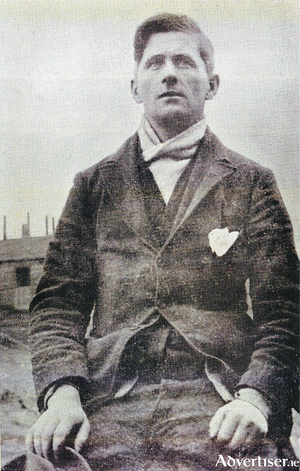
Liam Ó Briain was born in Dublin in 1888. In 1916 he helped print the Proclamation and he served with Michael Mallin in the College of Surgeons during the Rising. He was subsequently interned in Wandsworth Prison and in Frongoch. In 1917 he was appointed professor of romance languages in UCG. He was jailed in Belfast in 1919/20. When he returned to Galway he was appointed as a judge in the Republican Courts In late 1920, he was having dinner in college when he was arrested by the Black and Tans, and jailed for 13 months in Galway and the Curragh. Some of his experiences in prison are vividly described in a recently published book.
The Awaking of Augusta - The affair
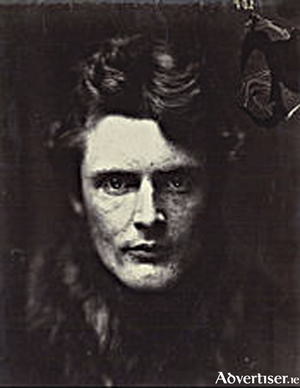
The affair between Augusta Lady Gregory and Wilfrid Scawen Blunt, the romantic traveller, poet and a somewhat eccentric man addicted to political causes, lasted one year. It carried on almost under the eyes of her husband Sir William. He did not notice it, or if he did, he chose not to notice it.
Auction of rare books, literature, manuscripts, and sporting collectibles makes €380,000

Fonsie Mealy auctioneers conducted a busy sale of more than 800 lots in Dublin on May 30. There was huge interest in the unique and interesting items on offer. Some of the west of Ireland related lots that sold for over twice their estimate were the the original door knocker from Galway Gaol (lot 529), described as a heavy cast iron door knocker modelled as a hand grabbing a wreath with lions mounted by Kerricks & Son on a mahogany frame, by tradition reputed to have been removed as a memento from Galway Gaol while being released from detention by Brian Corrigan, of Owenduff, Achill, West Mayo. The knocker realised €1,700, four times its pre-sale estimate.
Liam Ó Briain - Memories of the Easter Rising
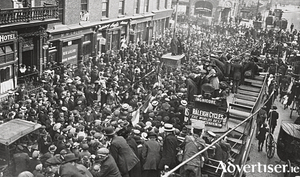
One of the real benefits of the the centenary commemorations of 1916, is the amount of research and new material that has been published on the background to the Rising, and in particular on the personalities of the men and women involved.
Geraldine Plunkett and Tom Dillon

Geraldine Plunkett was a daughter of Count George Noble Plunkett and a sister of Joseph Mary Plunkett. She became Joe’s aide-de-camp and knew all the 1916 leaders. She and Joe lived in Larkfield cottage in Kimmage where they stored guns and ammunition, and a lot of drilling, etc, occurred. Joe brought in Michael Collins to help her with the family accounts.
A letter from the sheriff
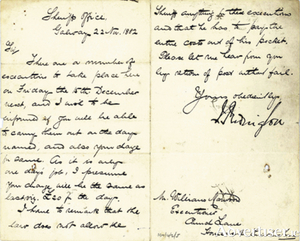
On the night of August 18, 1882, five members of one family, John Joyce, his wife Brighid, his mother Mairéad, his daughter Peigí, and his son Micheál, were murdered in Maamtrasna on the Galway/Mayo border. The motive for this multiple murder is unclear, but John was suspected of sheep stealing, his mother of being an informer, and his daughter of cavorting with the RIC who would have been the natural enemy of the locals. Two members of the family survived the horrific attack; a nine-year-old boy, Patsy, who was badly injured, and his older brother Máirtín who was working for a family in a neighbouring farm on the night.

